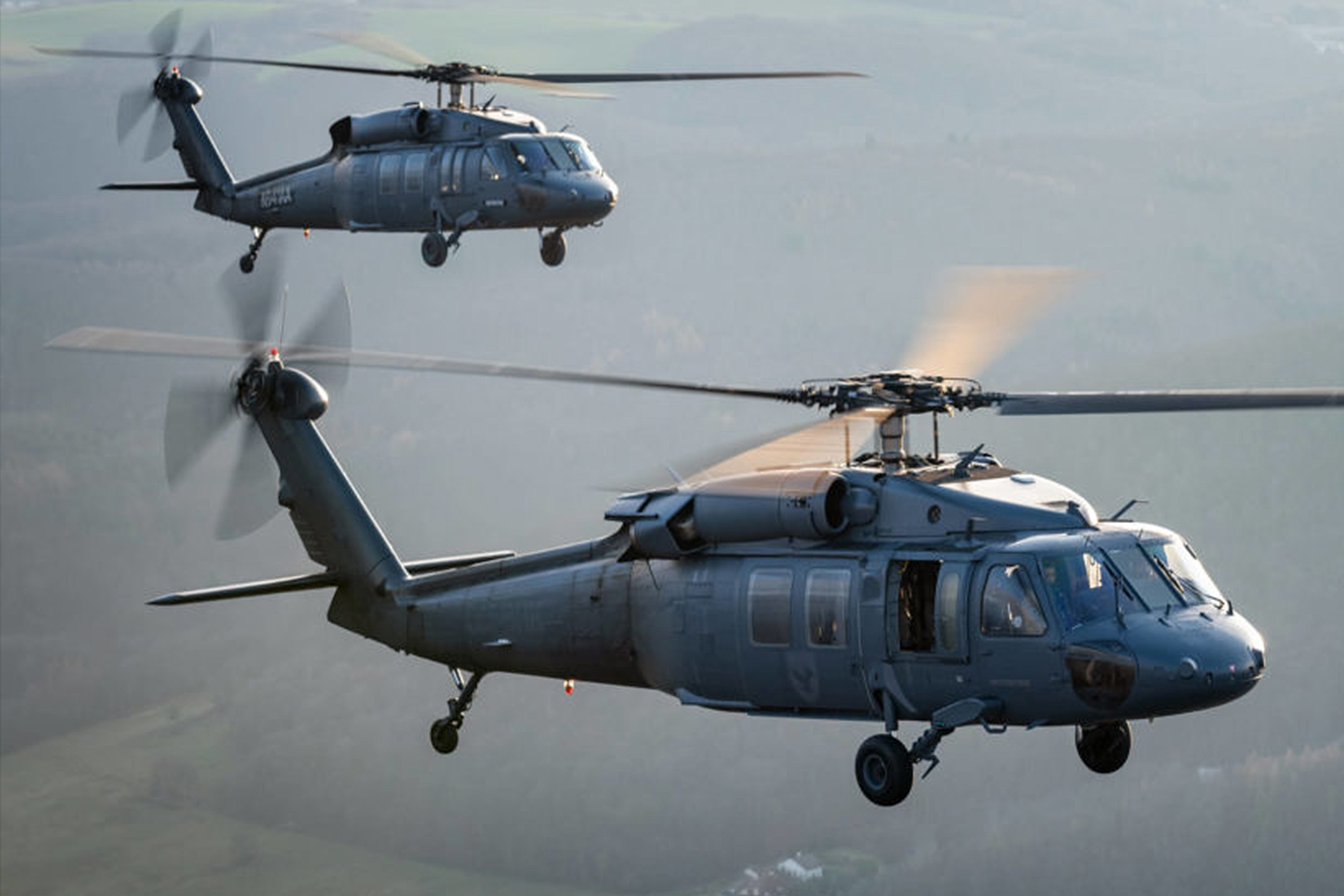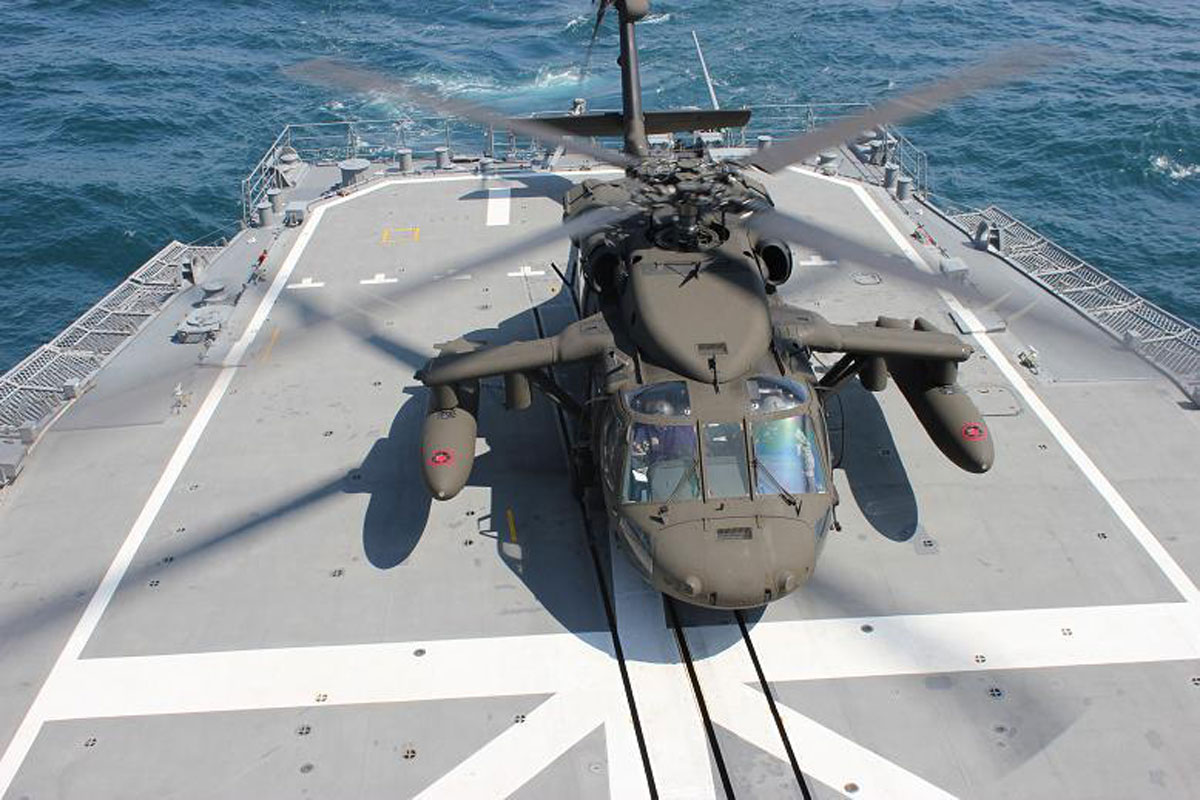UH-60: Technologies in Modern Helicopter Style
The UH-60 helicopter stands as a criteria in contemporary aviation, showcasing substantial innovations in style and modern technology that provide to the developing demands of armed forces procedures. As we discover the evolution and essential innovations of the UH-60, it comes to be crucial to consider exactly how these developments influence not only existing applications but additionally the future landscape of helicopter design.

Evolution of the UH-60
The development of the UH-60 Black Hawk helicopter stands for a considerable landmark in aerospace design and military air travel. Introduced in the late 1970s, the UH-60 was made by Sikorsky Aircraft to meet the USA Military's demand for a versatile utility helicopter qualified of executing a range of goals. Its style stressed longevity, ability to move, and speed, setting brand-new standards for operational efficiency.
The UH-60 includes a distinct four-blade rotor system, which improves lift and stability, permitting it to operate properly in varied settings. Its airframe is constructed from innovative composite products, adding to a reduction in weight while maintaining architectural stability. The helicopter's design additionally integrates better aerodynamics, which boosts fuel effectiveness and boosts range.
For many years, the Black Hawk has actually undergone multiple upgrades to improve its capacities, consisting of boosted engines, progressed flight control systems, and modular systems for simple upkeep and versatility. The helicopter's capacity to execute goals ranging from army transport to clinical emptying has actually strengthened its role as a backbone of U.S. military operations. The UH-60 Black Hawk remains an archetype of how development in helicopter style can considerably affect army efficiency and operational flexibility.
Advanced Avionics Systems
Improvements in avionics systems have transformed the capabilities of modern helicopters like the UH-60 Black Hawk, boosting functional performance and situational awareness (UH 60). The combination of sophisticated avionics enables for boosted interaction, flight, and navigation management, making the UH-60 more versatile in diverse mission accounts
One of the crucial functions is the advanced electronic cabin, which uses multifunction screens that supply real-time information, ensuring pilots have prompt accessibility to crucial flight information. This streamlining of information decreases pilot workload and enhances decision-making procedures during complex procedures. In addition, the incorporation of general practitioner and inertial navigation systems allows specific positioning and path planning, enhancing objective execution in tough settings.
Additionally, advanced avionics systems improve interaction abilities through safe data links and voice interaction systems, permitting smooth control with ground forces and other airplane. The integration of automated trip control systems even more adds to boosted stability and control, particularly in damaging weather condition conditions or throughout low-altitude maneuvers.
Engine and Efficiency Enhancements
Engine efficiency in modern-day helicopters has taken a substantial leap forward, driven by advancements that improve power, reliability, and effectiveness. At the forefront of these advancements is the fostering of even more effective turboshaft engines, specifically those using sophisticated materials and technologies that make it possible for higher temperature tolerances and enhanced thrust abilities. The UH-60 Black Hawk, for example, uses the T700-GE-701C engine, which includes a dual-channel, full-authority digital engine control system. This system enhances efficiency while optimizing gas intake and lowering maintenance requirements.
Moreover, the integration of engine health tracking systems permits real-time diagnostics and anticipating maintenance, dramatically boosting operational reliability. These systems not just sharp staffs to potential issues before they come to be important but also facilitate extra effective upkeep scheduling, consequently decreasing downtime.

Materials and Structural Innovations
Recent growths in materials and architectural style have transformed modern-day helicopter building, boosting both performance and sturdiness. The intro of advanced composite materials, such as carbon fiber enhanced polymers, has considerably reduced weight while maintaining structural stability. This change not just improves fuel effectiveness yet also enhances haul capability, allowing helicopters like the UH-60 to execute more diverse missions.
In addition, innovations in light weight aluminum alloys and titanium parts have actually added to find this boosted resistance to deterioration and fatigue, prolonging the life expectancy of vital airframe elements. The critical use these materials has actually caused a decrease in upkeep requirements and boosted overall operational readiness.

Additionally, the integration of computer-aided design (CAD) and additive manufacturing modern technologies has actually enabled a lot more light-weight frameworks and complicated geometries, optimizing the wind resistant efficiency of helicopter layouts. These improvements promote quick prototyping and production, allowing manufacturers to react swiftly to evolving mission requirements.
Security and Survivability Functions
Security and survivability attributes in modern helicopter style have come to be vital, mirroring the raising demands for mission performance in challenging atmospheres. The UH-60 Black Hawk, a noteworthy example, integrates innovative technologies to boost crew More about the author and passenger security. One of the most critical developments is the unification of crashworthy fuel systems developed to minimize the risk of fire throughout impact. In addition, the airframe is created with strengthened products that dissipate and absorb energy, additional safeguarding passengers in case of an accident.
The helicopter also uses a ballistic security system, which includes armored crew seats and important systems securing, reducing susceptability to tiny arms fire and shrapnel. Improved situational understanding is accomplished through innovative avionics and sensing unit technologies, permitting pilots to discover and stay clear of threats efficiently.
Furthermore, the assimilation of redundancy in essential systems-- such as twin engines and multiple trip control channels-- guarantees ongoing operation even if one system stops working. The UH-60 is geared up with sophisticated emergency situation flotation protection devices, enhancing survivability in water landings. Collectively, these functions not only boost the security of personnel yet likewise raise goal success rates in aggressive atmospheres, showing the dedication to quality in helicopter layout.
Conclusion
The UH-60 helicopter stands for a considerable development in modern aviation innovation, integrating ingenious products, sophisticated avionics, and robust security features. Its development reflects a commitment to boosting efficiency and operational efficiency while ensuring pilot learn the facts here now and team survivability. The assimilation of light-weight compounds and progressed navigating systems underscores the helicopter's versatility in various military objectives. On the whole, the UH-60 works as a standard for future growths in helicopter design, embodying durability and convenience in modern army procedures.
The UH-60 helicopter stands as a standard in modern-day aeronautics, showcasing significant developments in style and innovation that provide to the advancing needs of armed forces operations. As we check out the evolution and essential developments of the UH-60, it becomes important to think about how these developments influence not just current applications but also the future landscape of helicopter design.
Presented in the late 1970s, the UH-60 was made by Sikorsky Airplane to meet the United States Army's demand for a flexible utility helicopter capable of executing a selection of objectives. The UH-60 Black Hawk continues to be a prime instance of exactly how technology in helicopter layout can considerably impact army performance and operational flexibility.
On the whole, the UH-60 serves as a benchmark for future developments in helicopter style, personifying strength and flexibility in contemporary army operations.